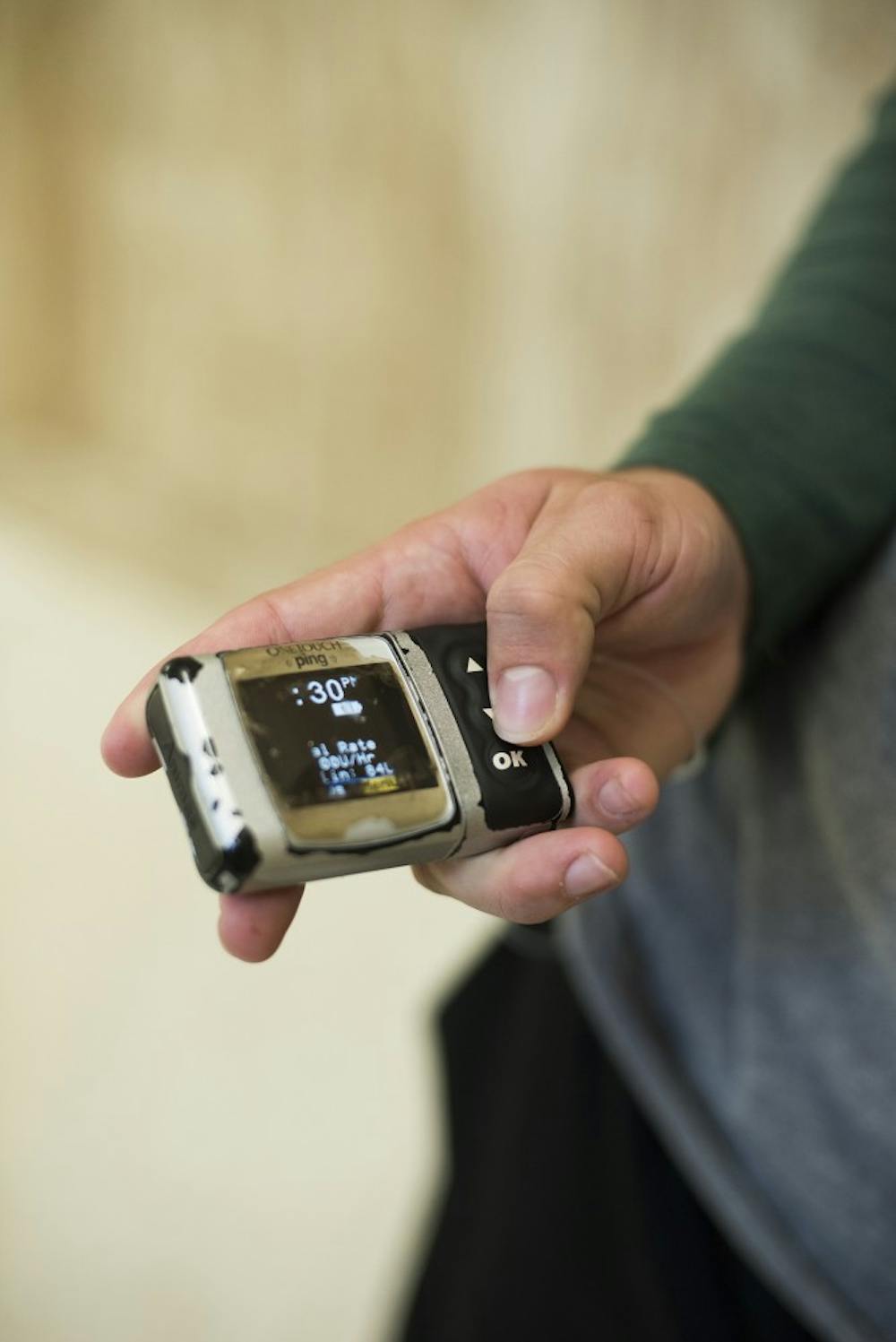It all started with donuts.
For then 13-year-old Nate D’Aurelio, they were a weekly occurrence — a well-intended gift from his Confirmation sponsor before weekly meetings. But with all that sugar in his system, he and his parents couldn’t shake the question: Why was he falling asleep halfway through the meetings?
“A few weeks later, I couldn’t even get out of bed,” D’Aurelio recalled. “I was so drained and tired. I had no energy.”
Just a few weeks later, doctors discovered that D’Aurelio’s blood glucose level was nearly 690 milligrams/deciliter. Typically, human blood glucose levels hover around 100, fluctuating with food consumption and physical activity. At that rate, D’Aurelio was just steps away from falling into a coma.
His parents rushed him to the hospital in the middle of the night, where the conclusion became all but obvious: D’Aurelio was exhibiting the textbook symptoms of Type 1 diabetes — an autoimmune disease in which the pancreas is unable to produce insulin, the hormone that allows the body to process sugar.
He would spend the coming days learning to navigate the complex in’s and out’s of a disease that affects approximately 1.25 million Americans, and requires around the clock vigilance.
Now a senior studying accounting at Ohio University, D’Aurelio has nearly eight years of experience under his belt, having learned to carefully count carbs and monitor his blood sugar, taking insulin every time he eats.
On a sunny Wednesday afternoon, he swings by Wendy’s for lunch, calculating the number of carbs in the food before pricking his finger with a lancet, dabbing a spot of blood onto a thin strip that reads his blood sugar levels.
Blood glucose test strips — crucial components of a diabetic’s routine — cost on average about $1 per unit. D’Aurelio estimates that he tests his blood sugar about six or seven times per day. At that rate, it can be estimated that Type 1 diabetics like D’Aurelio spend at least $2,500 per year — and that’s just the test strips.
One carton of NovoLog, the insulin that D’Aurelio uses to keep his blood sugar in check, costs about $600.
A new analysis by The Journal of American Medicine Association, however, reveals an even more concerning fact: The cost of insulin nearly tripled between 2002 and 2013, rising from approximately $231 to $736.
As most of D’Aurelio’s expenses are covered by his parents’ insurance, he counts himself among the relatively lucky ones — those who would seldom lose sleep at night over the price of the life-saving substance. But for those not covered by health insurance, an increase in prices could be a matter of life and death.
“There is a cause for worry,” Amber Healy, an assistant professor of diabetology, said. “The rising costs of insulin make it harder for patients to afford other necessities like food, utilities, rent and medication for other members of their household.”
When diabetics find themselves struggling to make ends meet they tend to seek out dangerous alternative methods, which can range from skipping insulin doses to omitting them altogether, Healy explained.
Karen Bailey, co-director of clinical care at the Diabetes Institute at OU, said that finding the right insurance is often a headache for students transitioning off their parents’ coverage.
“The problem is that the market is very purposefully confusing,” Bailey said. “The whole point is to make a profit.”
Though D’Aurelio is far from reaching the drastic measures that Healy described, he is concerned that pharmaceutical companies such as Novo Nordisk, which manufactures NovoLog, are heading in a direction that values sales over consumer well-being.
Pondering the implications, he places his order at an ice cream shop counter: two scoops of vanilla on a sugar cone — ”just what a diabetic needs,” he said.
“You need insulin to survive. I feel like something that you need every day shouldn’t be allowed to get jacked up crazy high,” D’Aurelio said. “They’re supposed to be selling insulin to help us. Not to make a profit off us.”






